7 Best Champagnes for a Wedding Toast or Gift [2024]
by Ryan Hart | Updated on March 8, 2024 | Post may contain affiliate links. As an Amazon Associate we earn from qualifying purchases.
A wedding toast is a tradition that celebrates the couple’s new beginning. It is a time to raise a glass and offer well wishes to the bride and groom.
While any champagne will do, there are some specific brands that are perfect for wedding toasts. We drank more than a few bottles of the best bubbly to give you the insight that you need to pick champagne that suits you.
Here are our top picks for the best champagne for toasts or even wedding gifts.
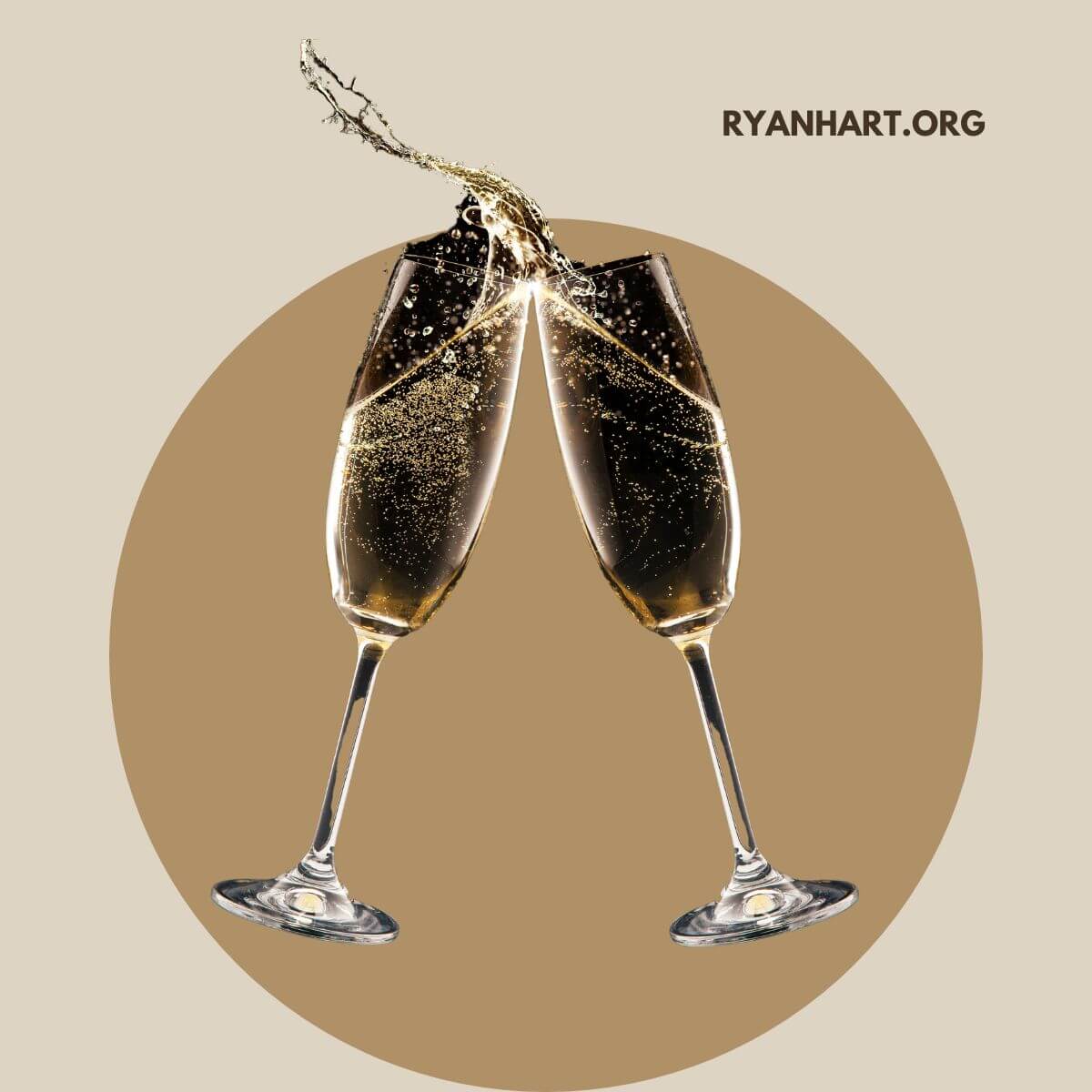
What is the Best Wedding Champagne?
The best wedding champagne is one that suits your taste profile, doesn’t cost too much, and pleases your guests.
The following five options should work well for most people and typically provide the best overall champagne for wedding toasts that you can find online or in stores near you.
1. Korbel Brut California Champagne
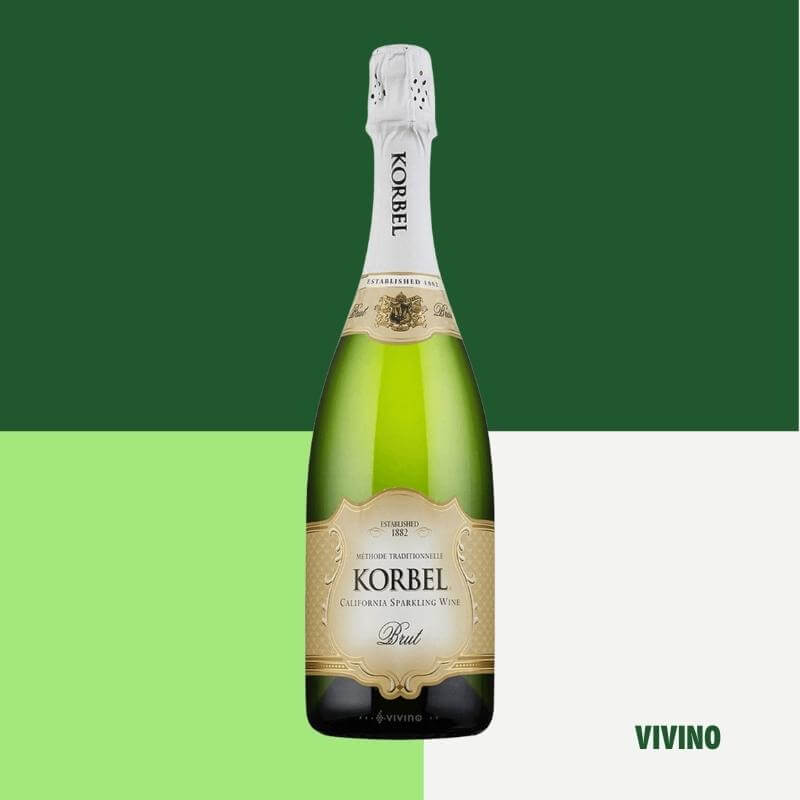
Korbel is a popular winemaker that produces an inexpensive and well-regarded champagne for wedding toasts.
Their champagne typically has a bolder taste, with a fizzier overall texture and a slightly acidic flavor on the tongue. Reviewers typically state it has tree fruit notes, such as apple and pear flavors, though some also mention citrus, lemon, orange, toast, biscuit, and even brioche flavors.
Highlights:
- A very reasonable price that should fit well into many wedding budgets
- A smooth taste that works well for wedding toasts and general drinking
- Great food pairings with fish, appetizers, and snacks for a wedding
- A diverse array of other wines that may work well with many weddings
- Consistently good bubbles that match higher-priced champagnes
What Korbel Does Best:
This is the best wedding champagne for people on a budget or who want to keep their wedding expenses low.
Reviewers consistently stated that it was a solid and reliable option that, while perhaps not the finest on the market, was not far off. That makes it a good choice for many wedding situations.
Check Current Price
2. La Marca Prosecco
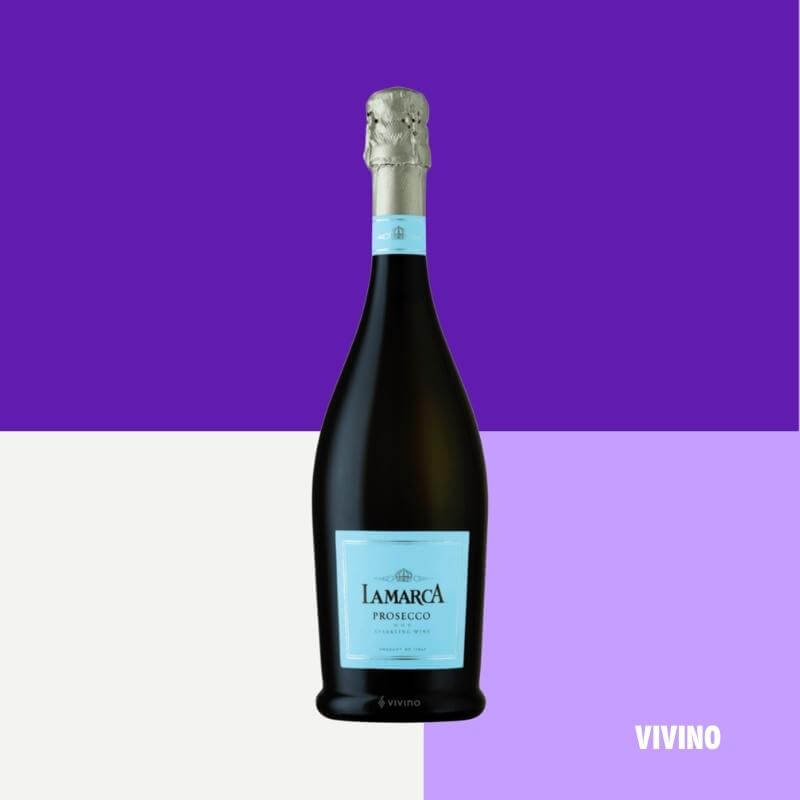
La Marca Prosecco is a mid-range upgrade on Korbel that provides a similar budget-friendly price with a higher quality taste. Its lighter texture is balanced by a more acidic and fizzy texture that creates a more compelling overall champagne flavor.
Reviewers mentioned undertones of apple, green apple, pear, lemon, grapefruit, honey, minerals, and stone after trying this champagne.
As a result, it is the best wedding champagne for people with more exacting tastes or those that want the best champagne for destination wedding situations.
Highlights:
- An incredibly fair price that is, honestly, hard to top for the wine quality you receive
- Multiple food options that blend well with this wine, including shellfish and nachos
- Diverse taste undertones give this blend a surprising range of flavors
- Easy accessibility from numerous vendors around the world
- A fizzy overall texture that makes wedding toasts a lot of fun
What La Marca Does Best:
This option is the best champagne for weddings that want a good balance between quality and budget. La Marca Prosecco is an upgrade on Korbel in quality and is an amazingly great value, with most wines of this quality typically costing more.
The lighter flavor and more acidic taste provide a slightly sweeter feel that also goes well with meatier and richer wedding meals, such as meatballs.
Check Current Price
3. Veuve Clicquot Yellow Label Brut
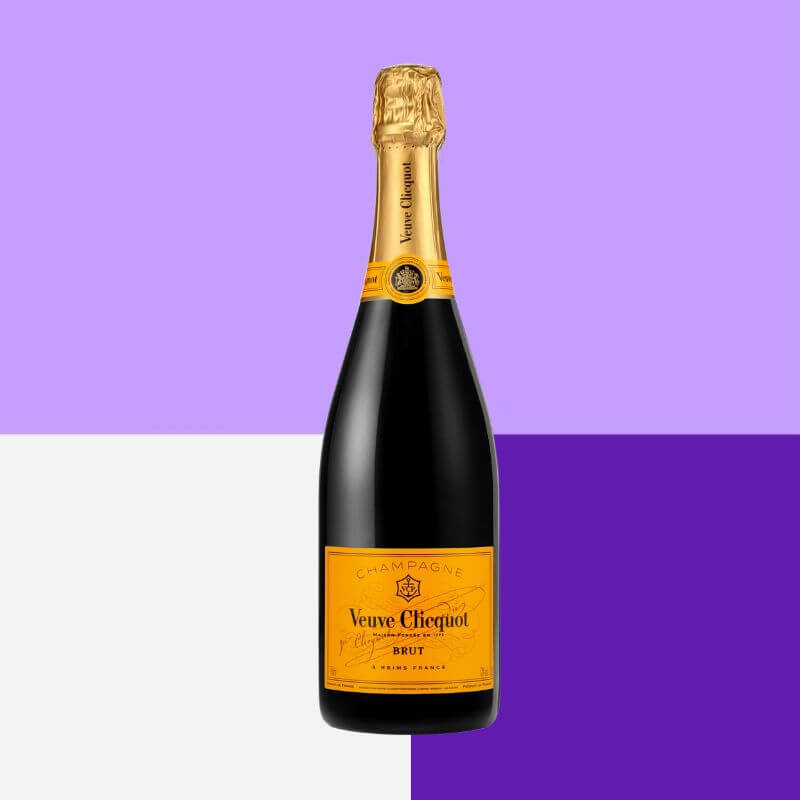
People with more serious champagne tastes may enjoy this vintage from Veuve Clicquot, as it has one of the boldest tastes paired with an acidic and fizzy aftertaste.
These unique combinations make it the best wedding champagne for higher-end weddings or with people who want the highest quality possible for their reception experience.
Tasters report notes of biscuit, brioche, lemon, lime, pear, and green apple with this wine and state that it goes well with pork and mild cheeses. However, it also works great with rich salmon and tuna dishes, making it perfect for many reception situations.
Highlights:
- A sharp texture that matches the highest-quality champagnes in the world
- A more than fair price considering the overall quality of this vintage
- Attractive bottle design that looks beautiful on wedding reception tables
- High reputation among champagne drinkers around the world
- The bubbly texture that makes wedding toasts more fun for newlywed couples
What Veuve Clicquot Does Best:
If you want the best quality champagne for wedding toasts, this might be one of the most affordable options for high-end drinks. While it costs more than other options on our list, the extra price is evident in the improved flavor, enhanced sparkling texture, and overall finer taste.
The 1990 vintage is among the top one percent of all wines in the world, making it an excellent option for many people.
Check Current Price
4. Moet and Chandon Imperial Brut Champagne
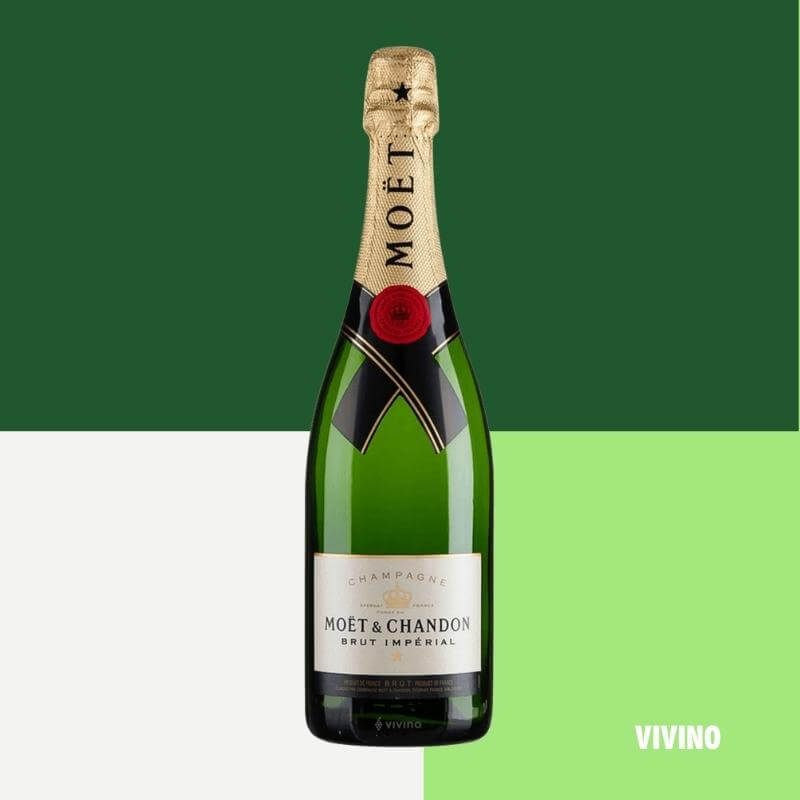
This high-end champagne is similar to Veuve Clicquot’s overall quality and cost. Moet and Chandon’s Imperial Brut has a similar acidic and fizzy texture but is slightly less bold. As a result, it may work well for people looking for a less intense champagne for their wedding toasts.
Commonly mentioned undertones include citrus flavors, like lemon, that are common for many champagne brands. Reviewers stated that it also works well as a cooking champagne, meaning that you could mix it with various reception foods to create unique flavors and dishes.
Highlights:
- Slightly lighter taste that works well for less demanding drinkers
- Lower price when compared to other champagnes of this quality
- Useful as a cooking champagne when creating wedding meals
- The lingering aftertaste that keeps the palate satisfied long after a drink
- A balanced overall flavor profile that should appeal to many buyers
What Moet & Chandon Does Best:
Moet & Chandon typically make great mid-level vintages, and this champagne is no different. However, it is unique on this list because of its adaptability as a cooking champagne, making it an interesting option for many situations.
Reviewers stated it went exceptionally well with pork-based dishes and was a fantastic glaze that doubled as the best wedding champagne for foodies.
Check Current Price
5. Lanson Le Black Label Brut Champagne
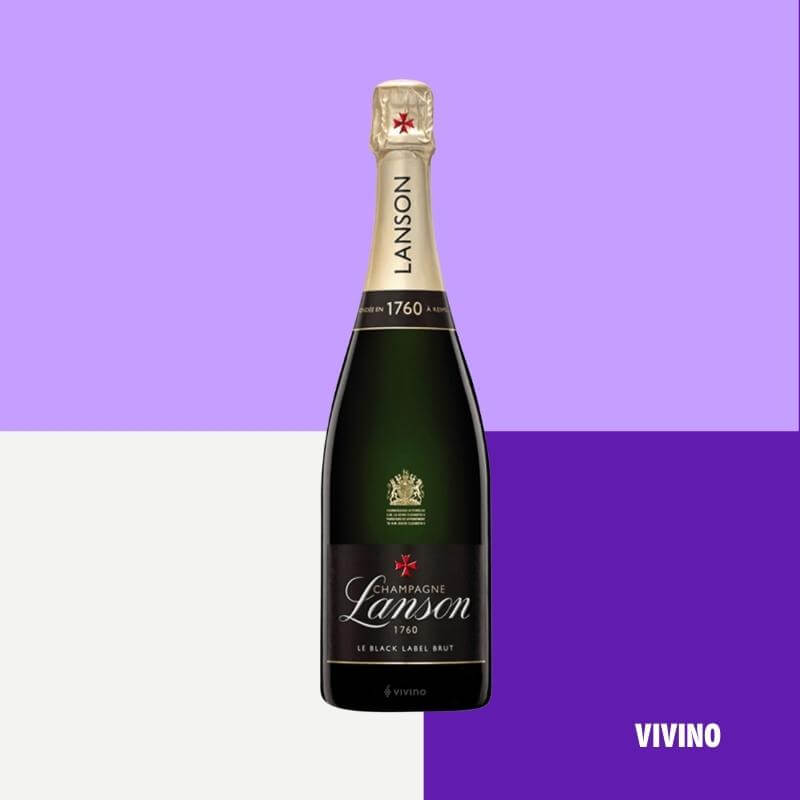
This popular French champagne from Lanson combines a fairly bold flavor with high-end acidity and a fizzy texture to produce one of the best champagne options for weddings.
The reasonable price matches the quality, which is strong and reliable. It stands apart from other champagnes here by having sharper citrus flavors than tree fruit. Expect lemon and lime undertones with a slight orange peel touch.
Highlights:
- A more citrus-heavy taste than other champagnes on the list
- Useful food blending options, including an affinity for chicken-based meals
- Strong creamy appearance with each pour that creates a satisfying look
- A slightly wine-style texture that gives it a classier feel
- High-quality grapes carefully prepared using a unique French champagne process
What Lanson Does Best:
Lanson is an excellent option if you’re more of a wine fan than champagne and want a toast drink with subtle textures. It has the more citrus-heavy feel common with French wines from this region and very fine bubbles with each pour. This subtle nature makes this the best champagne for weddings with a mixed guest list.
Check Current PriceFrequently Asked Questions
What is a wedding toast?
A wedding toast is a speech typically given by a best man, maid of honor, or close friend during a wedding reception. The purpose of the toast is to congratulate the newlyweds and wish them happiness in their marriage.
Wedding toasts often include personal anecdotes about the couple and stories about their courtship and relationship. In addition to being a touching gesture, a wedding toast is also an opportunity to share words of wisdom about love and marriage.
Ultimately, a wedding toast is a heartfelt way to celebrate the beginning of a new chapter in the lives of two people who are deeply in love.
What is Champagne?
Champagne is a sparkling wine that originates from the Champagne region of France.
It is made using a traditional method known as methode champenoise, which involves fermenting the wine in a bottle instead of in a barrel. This process results in a wine with higher carbonation levels, which gives it its signature bubbles.
Champagne is made from a special blend of three grape varieties: Chardonnay, Pinot Noir, and Pinot Meunier. The sparkling wine is aged for a minimum of 15 months before being sold.
Champagne is often associated with special occasions and celebrations, and its unique flavor has made it one of the most popular sparkling wines in the world.
How many glasses of Champagne are in a bottle?
A bottle of Champagne contains approximately six glasses of Champagne. Of course, this will vary depending on the size of the bottle and the glasses.
For example, a magnum (1.5 liter) bottle will yield more servings than a standard (750 ml) bottle. Similarly, a flute glass will hold less Champagne than a coupe glass.
When serving Champagne, it is essential to pour slowly and not overfill the glasses. For a standard bottle, aim for about four ounces per glass.
What’s the difference between brut and extra-dry Champagne?
Brut and extra-dry Champagne are both types of sparkling wine, but they differ in sweetness.
Brut champagne is the driest type of Champagne, with less than 1% sugar. Extra-dry Champagne is slightly sweeter, with 1-2% sugar.
The sweetness of Champagne is determined by the amount of sugar added after fermentation; however, both types of Champagne are still relatively dry compared to other Sparkling wines.
When it comes to taste, it comes down to personal preference. Some people prefer the dryness of brut Champagne, while others prefer the slight sweetness of extra-dry Champagne.
But, of course, there is no right or wrong answer; it simply depends on what you like.
What’s the difference between prosecco vs champagne?
When it comes to sparkling wine, there are two main types: Champagne and prosecco.
Champagne is made from a blend of three grapes - Chardonnay, Pinot Noir, and Pinot Meunier - while Prosecco is made from a single grape variety, Glera.
Champagne is produced using the traditional “methode champenoise,” in which the wine undergoes a second fermentation in the bottle. This process is responsible for Champagne’s signature bubbles.
In contrast, Prosecco is made using the “Charmat method,” in which the wine ferments in large tanks before being bottled. This difference in production methods explains why Champagne tends to be more expensive than Prosecco.
Champagne is often described as nutty or toasty, thanks to the influence of the Chardonnay grapes. Conversely, Prosecco tends to be lighter and fruitier, with aromas of honeysuckle and stone fruit.
Champagne is made using grapes from the Champagne region of France, while prosecco is made with grapes from the Veneto region of Italy. Champagne is typically aged for a more extended period before it is released, while prosecco is meant to be consumed relatively young.
As a result, Champagne tends to be more complex and nuanced, while prosecco is lighter and more refreshing. When it comes to choosing between the two, it depends on your personal preferences.
How do I choose the right champagne based on my wedding budget?
Choosing the right champagne or sparkling wine for your wedding reception requires careful consideration of both your preferences and your budget. First, determine how much of your wedding budget will be dedicated to beverages, particularly champagne or wedding wine. If traditional champagne, which is exclusively produced in the Champagne region of France, proves too costly, consider alternative sparkling wines. These can often offer a comparable taste at a more affordable price, especially varieties made from Pinot Noir grapes, which are known for their rich flavor.
To ensure you select a wine that suits your taste, organize a tasting session. This could either be through a local wine merchant or by purchasing a selection of well-reviewed bottles within your budget to try at home. Purchasing in bulk can also lead to significant savings, as many retailers offer discounts for larger orders, which is ideal for accommodating wedding receptions.
Additionally, think about the style and theme of your wedding when making your selection. For example, a light, crisp sparkling wine might be perfect for a summer wedding, while a fuller-bodied option from Pinot Noir grapes may better suit an elegant evening affair. If choosing becomes overwhelming, don’t hesitate to consult with a sommelier or wine expert. Their expertise can guide you to the best choice that aligns with your taste and budget, ensuring your wedding champagne or sparkling wine perfectly complements your celebration.
How many bottles of champagne do I need for my wedding guests?
To determine the number of bottles of champagne or sparkling wine you’ll need for your wedding, start by considering the number of guests and how you plan to use the champagne throughout the event. Generally, if champagne is served throughout the reception, estimate about half a bottle per guest. This calculation changes if the champagne is only for toasting; then you might need about one-fifth of a bottle per guest. For example, if you have 100 guests and plan to serve champagne all evening, you would need around 50 bottles. However, if it’s just for toasting, around 20 bottles should suffice.
The type of champagne can also influence consumption. Choices such as rosé champagnes or sparkling rosé, known for their appealing color and often creamy texture, might be more popular and therefore consumed more quickly. Always consider buying a few extra bottles beyond your estimate to ensure you don’t run out, especially during critical moments like the toast.
Additionally, the presence of other beverages such as wine, beer, or cocktails can affect the amount of champagne needed. If you plan a diverse drink menu, you might reduce the number of champagne bottles accordingly. Balancing your selection based on your wedding budget and the preferences of your guests will help ensure that everyone enjoys the celebration without unnecessary excess.
Should I choose vintage or non-vintage champagne for my wedding?
Choosing between vintage and non-vintage champagne for your wedding depends on a few key factors, including your wedding budget, the scale of the event, and your personal preference for what constitutes the perfect champagne.
Vintage champagne, which is made from grapes harvested in a single year, is typically more expensive due to its limited production and aging potential. It often features complex flavors that develop from extended aging on the lees. If you’re looking for a special, memorable element in your wedding celebrations, and your budget allows, a vintage champagne could add an exquisite touch.
Non-vintage champagne, on the other hand, blends grapes from multiple years and is designed to maintain a consistent house style. This type of champagne offers excellent quality and flavor consistency, making it a practical and popular choice for weddings. It is also generally more affordable, which can be advantageous if you’re mindful of how much champagne you need for a large number of guests.
In deciding which to choose, consider what the champagne will be used for during your wedding. If it’s for a toast, non-vintage champagne usually suffices, providing quality and flavor that complements the moment without overwhelming your budget. However, if you want to feature champagne more prominently, or as a special highlight, opting for a vintage champagne might enhance the overall experience.
Ultimately, the decision should align with your budget constraints and the desired ambiance of your wedding celebrations. Both vintage and non-vintage champagnes can serve as delightful choices, each bringing its own charm and sophistication to your special day.
Bottom Line
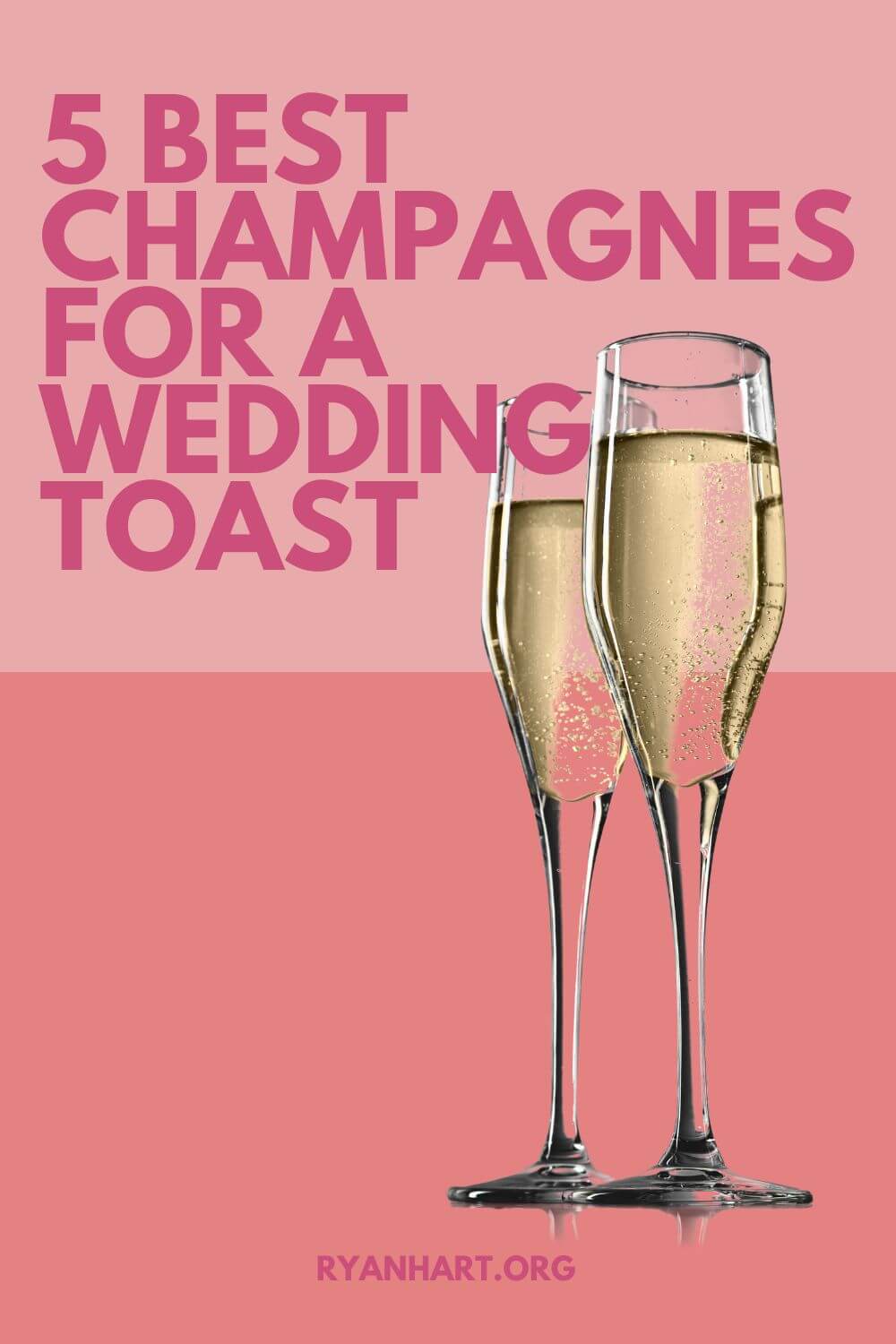
Before purchasing Champagne for a wedding toast, here are a few things to keep in mind.
First, consider the size of the wedding venue and the number of guests that will be attending. A larger venue will require more Champagne, so it is essential to factor this into your budget.
Next, think about the type of Champagne you would like to serve. There are many different styles, so take some time to research what would best suit your taste and the style of your wedding.
Finally, make sure to purchase Champagne that is within your budget. You want to ensure you have enough to serve all your guests, but you also don’t want to overspend on this special occasion.
With these tips in mind, you can be sure to find the perfect Champagne for your wedding toast.

Ryan Hart is a licensed insurance agent, writer, and former home designer. He is on a mission to help couples protect their homes in retirement with life insurance and annuities.
Want to connect with Ryan? Click here to get his FREE retirement planning newsletter
